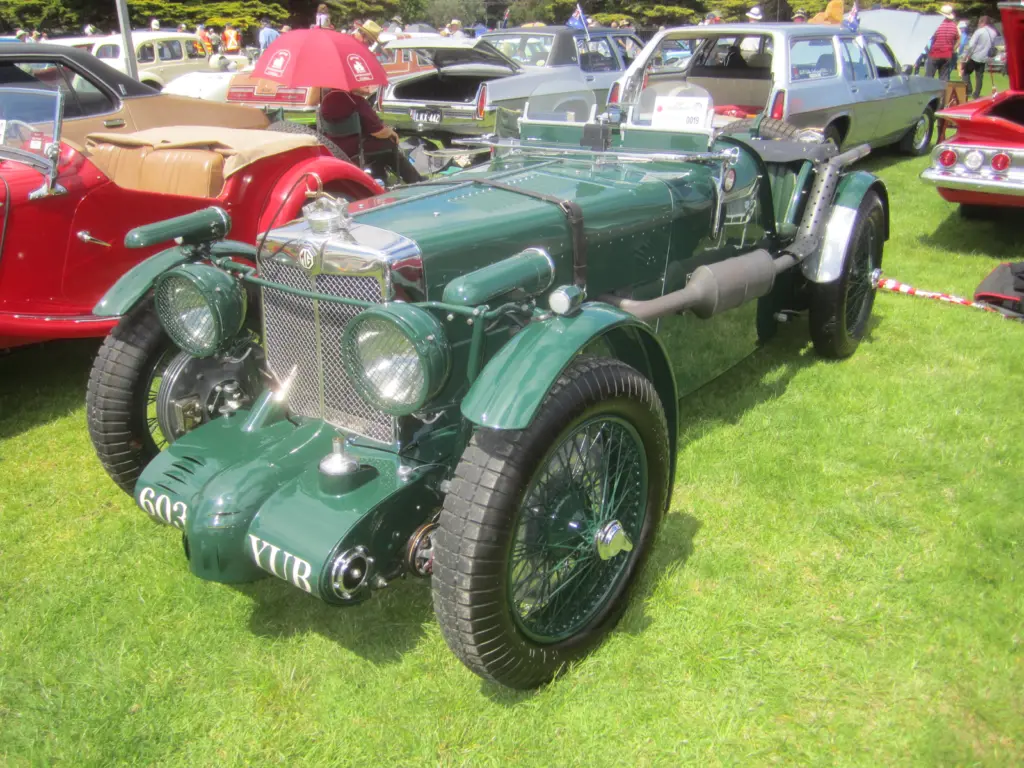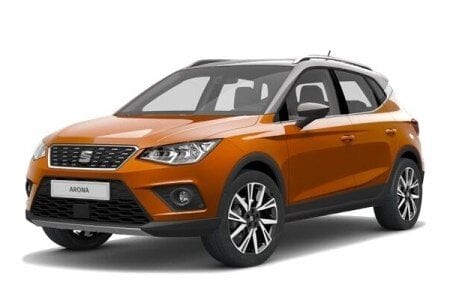
History of the car brand MG
The MG car brand is produced by an English company. It specializes in light sports cars, which are modifications of the popular Rover models. The company was founded in the 20s of the 20th century. It is known for its open-top sports cars for 2 people. In addition, MG produced sedans and coupes with an engine displacement of 3 liters. Today the brand is owned by SAIC Motor Corporation Limited.
Emblem

The logo of the MG brand is an octahedron in which the capital letters of the brand name are inscribed. This emblem was located on the radiator grilles and caps of British cars from 1923 until the closure of the Abigdon plant in 1980. Then the logo was installed on high-speed and sports cars. The background of the emblem could change over time.
Founder
The MG car brand originated in the 1920s. Then there was a dealership in Oxford called "Morris Garages", which was owned by William Morris. The creation of the company was preceded by the release of the machine under the Morris brand. Cowley cars with a 1,5 liter engine were successful, as well as Oxford cars, which had a 14 hp engine. In 1923, MG was founded by a man named Cecil Kimber, who served as a manager at Morris Garages, based in Oxford. He first asked Roworth to design 6 two-seaters to fit on a Morris Cowley chassis. Thus, the MG 18/80 type machines were born. This is how the Morris Garages (MG) brand was coined.
History of the brand in models

The first models of cars were produced in Morris Garages garage workshops. And then, in 1927, the company changed location and moved to Abingdon, near Oxford. It was there that the automobile company was located. Abingdon became the site where MG sports cars were held for the next 50 years. Of course, some cars were made in other cities in different years.
1927 saw the introduction of the MG Midget car. He becomes a model that very quickly gained popularity and spread in England. It was a four-seat model with a 14-horsepower motor. the car developed a speed of up to 80 km / h. She was competitive in the market at the time.
In 1928, the MG 18/80 was produced. The car was powered by a six-cylinder engine and a 2,5-liter engine. The name of the model was given for a reason: the first number symbolized 18 horsepower, and 80 declared the engine power. However, this model was quite expensive and therefore did not sell out quickly. But it should be noted that it was this car that became the first truly sports car. The engine was with an overhead camshaft and a special frame. It was the radiator grille of this car that was first decorated with the brand's logo. MG did not build car bodies by itself. They were purchased from the Carbodies company, located in Conventry. That is why the prices for MG cars were quite high.

A year after the release of MG 18/80, the MK II car was produced, which was restyled of the first. It was different in appearance: the frame became more massive and stiffer, the track increased by 10 cm, the brakes became larger, and a four-speed gearbox appeared. The engine remained the same. like the previous model. but due to the increase in the size of the car, he lost in speed. In addition to this car, two more versions were created: the MK I Speed, which had an aluminum touring body and 4 seats, and the MK III 18/100 Tigress, which was intended for racing. The second car had a capacity of 83 or 95 horsepower.
From 1928 to 1932, the company produced the MG M Midget brand, which quickly gained popularity and made the brand famous. The chassis of this car was based on the chassis of Morris Motors. This was the traditional solution for this family of machines. The car body was initially made of plywood and wood for lightness. The frame was covered with fabric. The car had motorcycle-style wings and a V-shaped windshield. The top of such a car was soft. The maximum speed that the car could reach was 96 km / h, but was in high demand among buyers, since the price was quite reasonable. in addition, the car was easy to drive and stable.

As a result, MG modernized the undercarriage of the car, equipping it with a 27 horsepower motor and a four-speed gearbox. The body panels have been replaced with metal ones, and the Sportsmen body has also appeared. This made the car the most suitable for racing of all other modifications.
The next car was the C Montlhery Midget. The brand produced 3325 units of the "M" line, which was replaced in 1932 by the "J" generation. Car C Montlhery Midget was equipped with an updated frame, as well as a 746 cc engine. Some cars were equipped with a mechanical supercharger. This car has successfully competed in handicap racing competitions. A total of 44 units were produced. In the same years, another car was produced - MG D Midget. Its wheelbase was lengthened, it was equipped with a 27 horsepower engine and had a three-speed gearbox. Such cars were produced 250 units.

The first car to be equipped with a six-cylinder engine was the MG F Magna. It was produced during 1931-1932. The complete set of the car did not differ from the previous models, it was almost the same. The model was in demand among buyers. Besides. it had 4 seats.
In 1933, the Model M replaced the MG L-Type Magna. The car's engine had a capacity of 41 horsepower and a volume of 1087 cc.
The generation of cars from the “J” family was created in 1932 and was based on the “M-Type” base. The machines of this line boasted increased power and good speeds. in addition, they had a more spacious interior and body. These were car models with side cutouts on the body, instead of doors, the car itself was fast and narrow, the wheels had a central mount and wire spokes. The spare wheel was located behind. The car had large headlights and a forward-folding windshield, as well as a folding top. This generation included MG L and 12 Midget cars.

The company produced two variants of the car on the same chassis with a wheelbase of 2,18 m. The “J1” was a four-seater body or a closed body. Later “J3” and “J4” were released. Their engines were supercharged, and the latest model had larger brakes.
From 1932 to 1936, the MG K and N Magnett models were produced. For 4 years of production, 3 frame variations, 4 types of six-cylinder motors and more than 5 body modifications have been designed. The design of the cars was determined by Cecil Kimber himself. Each Magnett restyling used one type of suspension, one of the six-cylinder engine modifications. These versions were not successful at that time. The Magnett name was revived in the 1950s and 1960s on BMC sedans.
Later, the Magnett K1, K2, KA and K3 cars saw the light. The first two models had a 1087 cc engine, a 1,22 m track gauge and 39 or 41 horsepower. The KA is equipped with a Wilson gearbox.

MG Magnet K3. The car took one of the prizes in the racing competition. In the same year, MG also designed the MG SA sedan, which was equipped with a six-cylinder 2,3-liter engine.
In 1932-1934, MG produced Magnet NA and NE modifications. And in 1934-1935. – MG Magnet KN. Its engine was 1271 cc.
Replacing the “J Midget”, which had been in production for 2 years, the manufacturer designed the MG PA, which became more spacious and was equipped with an 847 cc engine. The wheelbase of the car has become longer, the frame has received strength, there are enlarged brakes and a three-point crankshaft. The trim has been improved and the front fenders are now sloping. After 1,5 years, the MG PB machine was released.
In the 1930s, the company's sales and revenues plummeted.
In the 1950s. the MG manufacturers merge with the Austin brand. The joint venture is named British Motor Company. It organizes the production of a whole range of cars: MG B, MG A, MG B GT. MG Midget and MG Magnette III are gaining popularity among buyers. Since 1982, the British Leyland concern has been producing the MG Metro subcompact car, the MG Montego compact sedan, and the MG Maestro hatchback. In Britain, these machines are very popular. Since 2005, the MG brand has been bought by a Chinese car manufacturer. A representative of the Chinese car industry began to produce restyling of MG cars for China and England. since 2007 the release of a sedan has been launched MG 7, which became an analogue of the Rover 75. Today these cars are already losing their peculiarity and are switching to modern technologies.
Questions and answers:
How is MG car brand deciphered? The literal translation of the brand name is Morris's garage. An English dealership began making sports cars in 1923 at the suggestion of company manager Cecil Kimber.
What is the name of the MG car? Morris Garages (MG) is a British brand that produces mass-produced passenger cars with sporty characteristics. Since 2005, the company has been owned by the Chinese manufacturer NAC.
Where are MG cars assembled? The brand's manufacturing facilities are located in the UK and China. Thanks to the Chinese assembly, these cars have an excellent price / quality ratio.

One comment
anonym
The history of the brand is great. Not everyone can go this way and survive !!!!!